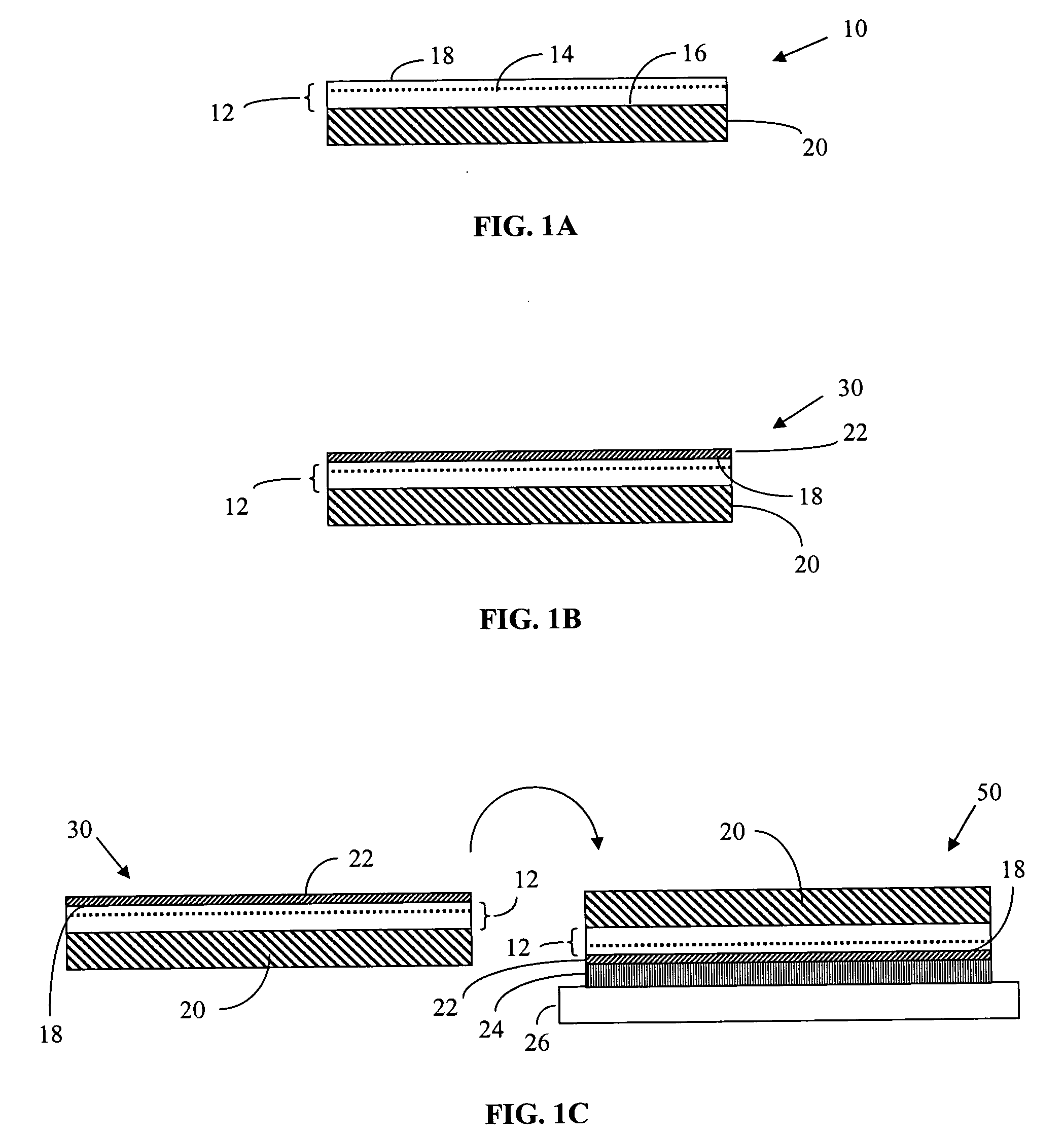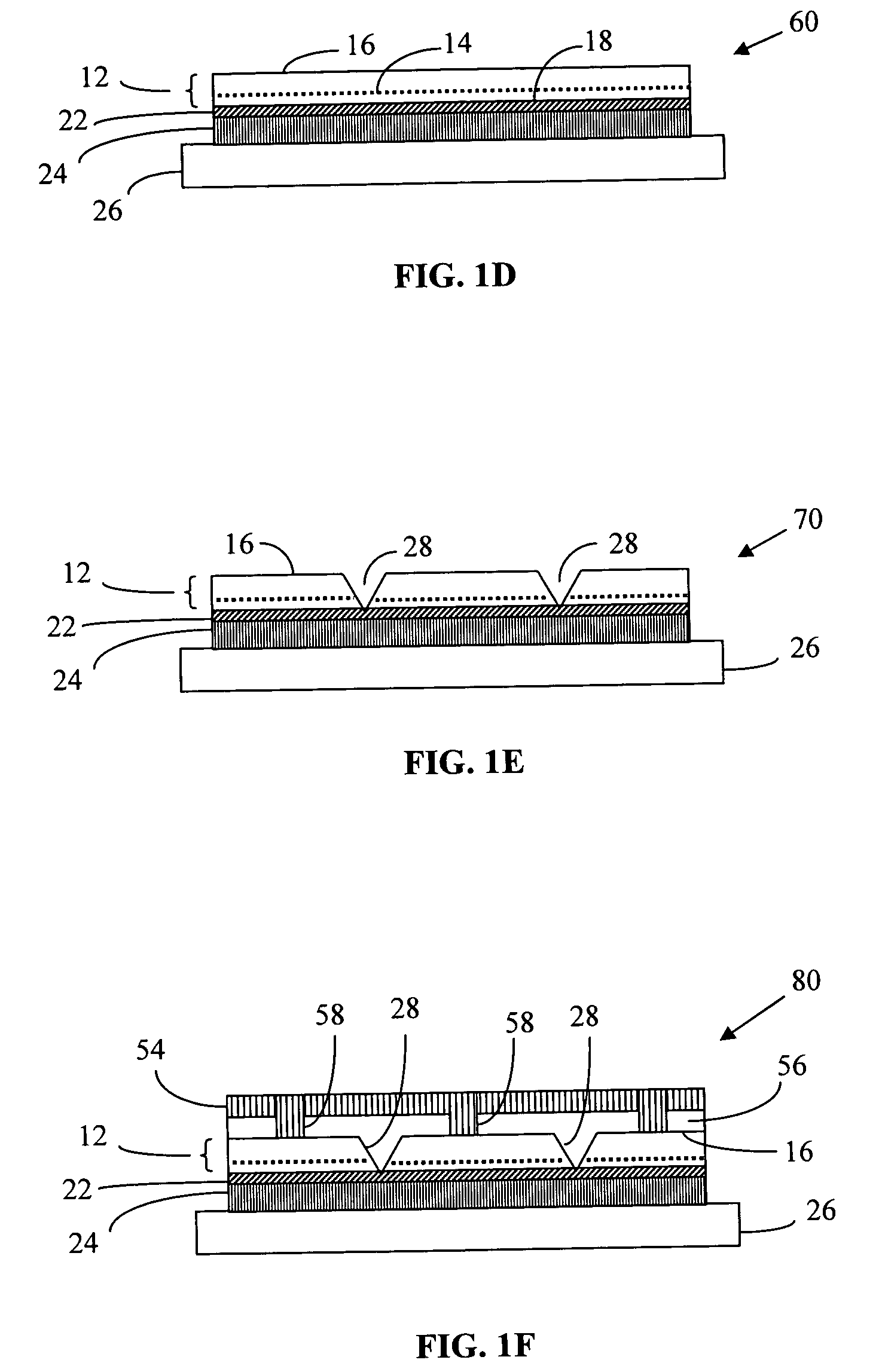Light emitting diodes exhibiting both high reflectivity and high light extraction
- Summary
- Abstract
- Description
- Claims
- Application Information
AI Technical Summary
Benefits of technology
Problems solved by technology
Method used
Image
Examples
example 1
[0162] A non-sequential ray tracing computer program was used to model the light extraction efficiency and the reflectivity of GaN LEDs that incorporated arrays of trenches for enhanced light extraction. The computer model included the effects of Fresnel reflections at the principal interfaces where the refractive index changed and included the effects of absorption in the semiconductor materials. A 4 micron thick GaN multi-layer semiconductor structure was modeled as a uniform single layer that had an absorption coefficient alpha of 50 cm−1. One side of the multi-layer semiconductor structure was coated with a metal reflecting layer. The reflectivity R(metal) of the reflecting layer was 0.95 or 95%. The opposite side of the GaN layer was the output side of the LED and was in contact with air having a refractive index of 1.0. The LED incorporated two arrays of trenches that had either positive or negative sidewall angles. The first set of trenches was perpendicular to the second set...
example 2
[0166] Example 2 is the same as Example 1 except that in Example 2 the output surface of the LED was embedded in a transparent material that had a refractive index of 1.50. The detector in this computer model was also embedded in the same transparent material and there was no air interface between the emitter and the detector. The model calculated the LED light extraction efficiency and reflectivity that would be measured inside a light recycling envelope that was filled with the transparent material.
[0167] The results are shown in FIG. 11. Compared to Example 1, embedding the LED in a material with a refractive index of 1.50 improved both the light extraction efficiency 1110 and the reflectivity 1120 of the LED. The reflectivity 1120 was greater than 77% for all angles and the light extraction efficiency 1110 was greater than 70% for some sidewall angles. However, the calculated light extraction efficiencies would be lower if the detector were in air and there were an air interfac...
example 3
[0168] In Example 3, a non-sequential ray tracing program was used to model the light extraction efficiency and the reflectivity of GaN LEDs that incorporated two perpendicular arrays of trenches. The sidewall angle of the trenches was fixed at +48 degrees and the trench spacing L was varied from 25 microns to 300 microns. A sidewall angel of +48 degrees corresponded to a maximum trench half-width of 4.5 microns (full width of 9 microns) when the multi-layer semiconductor structure was 4 microns thick. The trenches extended all the way through the GaN layer but did not extend into the metal reflecting layer. The resulting output surface of the LED was an array of square mesas. As in Example 1, the 4 micron thick GaN multi-layer semiconductor structure was modeled as a uniform single layer that had an absorption coefficient alpha of 50 cm−1. One side of the multi-layer semiconductor structure was coated with a metal reflecting layer. The reflectivity R(metal) of the reflecting layer ...
PUM
 Login to View More
Login to View More Abstract
Description
Claims
Application Information
 Login to View More
Login to View More - R&D
- Intellectual Property
- Life Sciences
- Materials
- Tech Scout
- Unparalleled Data Quality
- Higher Quality Content
- 60% Fewer Hallucinations
Browse by: Latest US Patents, China's latest patents, Technical Efficacy Thesaurus, Application Domain, Technology Topic, Popular Technical Reports.
© 2025 PatSnap. All rights reserved.Legal|Privacy policy|Modern Slavery Act Transparency Statement|Sitemap|About US| Contact US: help@patsnap.com



